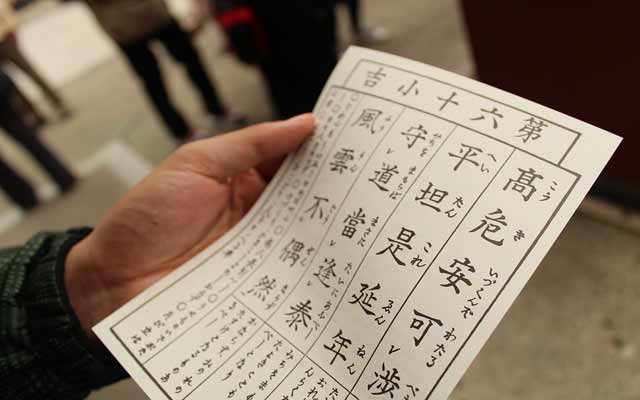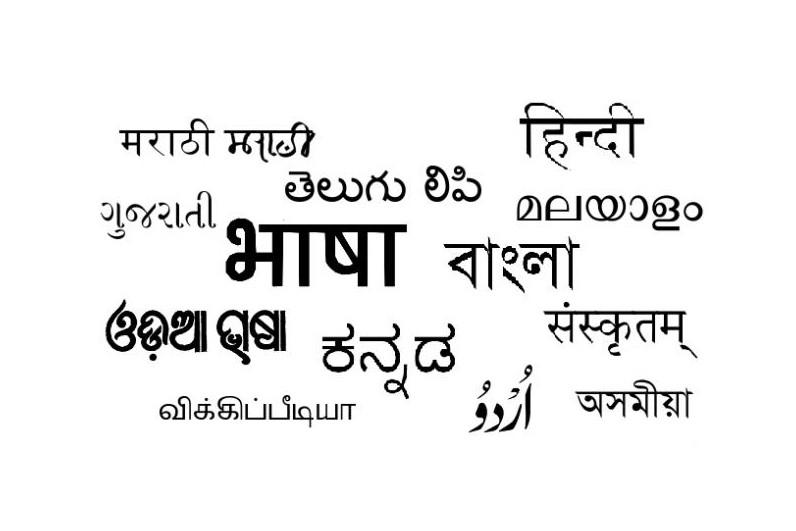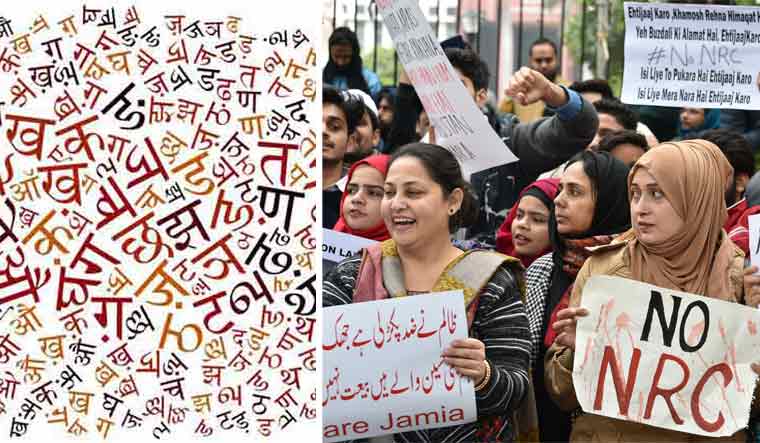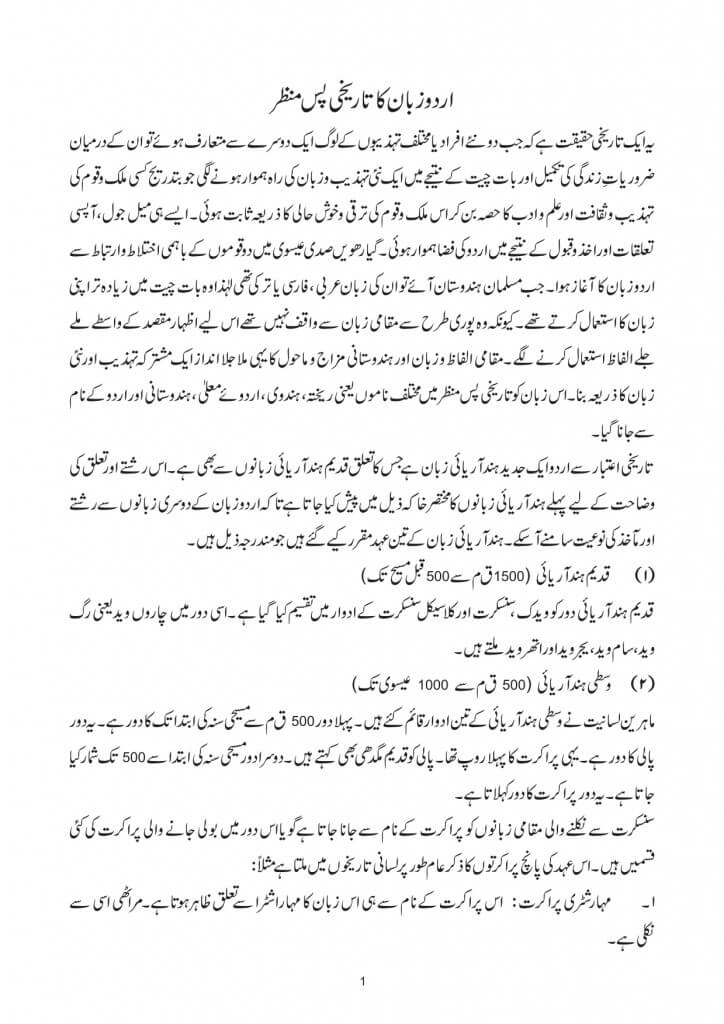Hindi and Urdu are generally considered to be one spoken language with two different literary traditions. That means that Hindi and Urdu speakers who shop in the same markets have no problems understanding each other -- they'd both say yeh kitne kaa hay for 'How much is it? And the Urdu one will be یہ کتنے کا ہے؟ Hindi is written from left to right in the Devanagari script, and is the official language of India, along with English. Urdu, on the other hand, is written from right to left in the Nastaliq script and is the national language of Pakistan.
It's also one of the official languages of the Indian states of Bihar and Jammu & Kashmir. Considered as one, these tongues constitute the second most spoken language in the world, sometimes called Hindustani. In their daily lives, Hindi and Urdu speakers communicate in their 'different' languages without major problems. Both Hindi and Urdu developed from Classical Sanskrit, which appeared in the Indus Valley at about the start of the Common Era. The first old Hindi poetry was written in the year 769 AD, and by the European Middle Ages it became known as 'Hindvi'. Muslim Turks invaded the Punjab in 1027 and took control of Delhi in 1193.
They paved the way for the Islamic Mughal Empire, which ruled northern India from the 16th century until it was defeated by the British Raj in the mid-19th century. It was at this time that the language of this book began to take form, a mixture of Hindvi grammar with Arabic, Persian and Turkish vocabulary. The Muslim speakers of Hindvi began to write in the Arabic script, creating Urdu, while the Hindu population incorporated the new words but continued to write in Devanagari script. Urdu, with more than 68 million native speakers, ranks as the eighteenth most spoken language in the world. It is the national language of Pakistan and one of the official languages of six India states.
Urdu shares many linguistic features with other Indic languages that have Sanskrit as their ancestor, however, it uses Perso-Arabic script. It has a rich literature including a very popular form of love poetry called Ghazal, devotional and Sufi poetry, and is a main source to study, learn and appreciate Indo-Islamic cultural traditions. Urdu has also been used in Indian movies since the start of the movie industry. Furthermore, Urdu skills are crucial for understanding the political, religious, and social mindset of the Urdu speaking community.
In India, although Urdu is not and never was used exclusively by Muslims , the ongoing Hindi–Urdu controversy and modern cultural association of each language with the two religions has led to fewer Hindus using Urdu. In part because the Pakistani government proclaimed Urdu the national language at Partition, the Indian state and some religious nationalists began to regard Urdu as a 'foreign' language, to be viewed with suspicion. Urdu advocates in India disagree whether it should be allowed to write Urdu in the Devanagari and Latin script to allow its survival, or whether this will only hasten its demise and that the language can only be preserved if expressed in the Perso-Arabic script.
In the Delhi region of India the native language was Khariboli, whose earliest form is known as Old Hindi . It belongs to the Western Hindi group of the Central Indo-Aryan languages. The contact of the Hindu and Muslim cultures during the period of Islamic conquests and in the Indian subcontinent led to the development of Hindustani as a product of a composite Ganga-Jamuni tehzeeb. In cities such as Delhi, the Indian language Old Hindi began to acquire many Persian loanwords and continued to be called "Hindi" and later, also "Hindustani". In southern India , a form of the language flourished in medieval India and is known as Dakhini, which contains loanwords from Telugu and Marathi. An early literary tradition of Hindavi was founded by Amir Khusrau in the late 13th century.
From the 13th century until the end of the 18th century the language now known as Urdu was called Hindi, Hindavi, Hindustani, Dehlavi, Lahori, and Lashkari. The Turko-Afghan Delhi Sultanate established Persian as its official language in India, a policy continued by the Mughal Empire, which extended over most of northern South Asia from the 16th to 18th centuries and cemented Persian influence on Hindustani. The name Urdu was first introduced by the poet Ghulam Hamadani Mushafi around 1780. As a literary language, Urdu took shape in courtly, elite settings.
While Urdu retained the grammar and core Indo-Aryan vocabulary of the local Indian dialect Khariboli, it adopted the Nastaleeq writing system – which was developed as a style of Persian calligraphy. Tibetan literature has an uninterrupted history of at least 1300 years. It includes a vast corpus of indigenous works of great value for the academic study of literary genres, religious praxis, state formation, and the development of canonical systems. Classical Tibetan is duly famous as the medium for the largest, and most accurate, body of translations of Buddhist texts from India, the majority of which are lost in the original Indian languages. In addition to being essential for the study of Tibetan history, literature, art and religion, classical Tibetan is of scholarly value for the study of South Asian culture and history, Chinese history, and historical linguistics.
Modern Tibetan is spoken by a population of approximately six million, in the Tibet Autonomous Region of the China, in other Tibetan cultural regions of China, and in the Tibetan diaspora . With the recent opening of Tibet to foreign travel and research, knowledge of modern Tibetan has become essential for students of any aspect of the region. There are numerous of modern spoken Tibetan, and the study of these dialects — essential for the study of cultural practices such as pilgrimage — is becoming an area of research at several institutions, including the University of Michigan. Bengali, with 189 million native speakers, ranks as the seventh most spoken language in the world. It is the official language of Bangladesh and the Indian state of West Bengal.
Bengali belongs to the Indo-European language family and, like many other Indian languages, has Sanskrit as its ancestor. Bengali is closely related to Hindi and Punjabi as they use the similar script, common vocabulary derived from Sanskrit, and the same word order. Bengali has a rich literary tradition that dates back to the 12th century. The famous Bengali philosopher and poet Rabindranath Tagore was awarded the Nobel Prize in literature in 1913. The Bengali movie industries known as Tollywood and Dhallywood are very popular because they produce good quality movies. Sanskrit is the gateway to premodern, and especially pre-Islamic, India.
It also served as a language of culture and religion and as a lingua franca in Central, East, and particularly Southeast Asia. It was carried into those regions along with the spread of Hinduism and Buddhism. The position of Sanskrit in Asia can be likened to that of Latin in medieval and early modern Europe. Sanskrit is recognized as one of the official languages of India and every university there has a Sanskrit department.
Sanskrit is of great value to the cultural self-definition of Hindu communities that have now spread across the globe. To children of Indian cultural background, Sanskrit opens the door to their classical culture. To academic students of Sanskrit, it is a gateway to the Hindu and Buddhist traditions, and to the pre-modern history of the subcontinent and beyond. Discovery of Sanskrit by the west in 1770s led to the development of Indo-European linguistics and reconstruction of the Indo-European language family and the cultural and religious pre-histories of Europe. Thus, the historical understanding of languages such as English requires some understanding of Sanskrit.
Sanskrit is also the ancestor of a number of the South Asian languages taught at the University of Michigan, including Hindi, Punjabi, and Urdu. Urdu, which was often referred to by the British administrators in India as the Hindustani language, was promoted in colonial India by British policies to counter the previous emphasis on Persian. Urdu replaced Persian as the official language of India in 1837 and was made co-official, along with English. Hindi is the official language of the Republic of India and the most widely spoken language in South Asia. Urdu is the national language of Pakistan, one of the official languages of India, and a tremendously important strategic language in South Asia.
With a common vocabulary and grammar, in their basic form, Hindi and Urdu are generally considered to be the same language written in two different scripts. Punjabi has more than 90 million native speakers around the world and ranks as the tenth most spoken language in the world. Punjabi is the language of sacred scriptures of the Sikhs, the official language of the state of Punjab , and a language of Sikh and Sufi mysticism and of regional literature among Punjabi Muslims in Pakistan. In Canada, Punjabi is the fourth most spoken language after English, French, and Chinese, while in the U.S. it is spoken by about half a million Punjabi and Sikh immigrants.
It shares many linguistic features with other Indic languages that have Sanskrit as their common ancestor. Punjabi is taught at U-M using the Gurmukhi scrip, which has some similarities to Hindi. The Punjabi program at the University of Michigan is the oldest in the U.S. There are 260 million speakers of Hindi, making it the fifth most spoken language in the world. Outside of India, it is spoken by a substantial population in Bangladesh, the U.K., the U.S., and thirteen other nations. It has an old and rich literature that dates back to late Medieval period.
Hindi is also the main language of the Bollywood film industry, which produces an astounding number of movies on a variety of topics every year. The Bollywood movie industry has greatly contributed to popularising Hindi around the world. Discover one of the most vibrant regions of the modern world and the rich heritage of the South Asian cultures through Hindi and Urdu languages. Hindi is the national language of India, and Urdu is the national language of Pakistan. Together, Hindi-Urdu is the 4th biggest language of the world in terms of the number of speakers.
Hindi and Urdu are nearly identical and mutually comprehensible at the spoken level but differ in terms of the script and cultural markers. Hindi derives its vocabulary from Sanskrit, while Urdu borrows from Persian and Arabic. In the beginning and advanced levels Hindi and Urdu are taught together. At the intermediate level and beyond, students have the opportunity to focus intensively on one script, while continuing to develop their broader cultural and linguistic fluency in Hindi-Urdu. URDU, the national language (qaumī zabān) of Pakistan and one of the fifteen officially recognized languages of India.
It is spoken, according to recent censuses made in India and Pakistan, by an estimated 53 million people in the South Asian subcontinent (Schmidt, 2004, p. 288). To this we may add the millions of people, both inside and outside the subcontinent, who use Urdu as a primary means of communication. The Panjabi-speaking population of Pakistan, for example, employ Urdu rather than their own language almost exclusively as a written and literary medium. Along with its "sister language," Hindi, with which it shares a virtually identical grammatical base, Urdu at the most basic, spoken level still functions as a convenient lingua franca, and is intelligible to vast sections of the population of South Asia.
For this reason it is the preferred medium of the Indian film industry, to which many well-established Urdu writers contribute scripts and especially songs, the lyrics of which frequently follow the conventions of classical Urdu poetry. Alok Rai, avid supporter for the promotion of both Urdu and Hindi, further points out that the "Punjabi-dominated Pakistan still declares Urdu to be its national language." How could one religion speak up for the various ethnic groups it comprises? In this way, too, Urdu not only cannot be restricted to Islam since so many Muslims and non- Muslims use it, as well as different ethnic groups. In addition to Punjabis using the language, Pashtuns, Sindhis, Balochis, Biharis, Delhiites, Kashmiris, and Uttar Pradeshis make up the majority of Urdu speakers, who comprise of multiple ethnic groups . Along these lines, Urdu should be viewed as a language that is not limited to one group of people; it serves as an intermingling of cultures, according to Inder Jit Lall. Lall, literary critic, translator, author, and promoter of the study of Urdu literature.
He shows how Urdu's vocabulary includes words from Hindi, Arabic, Sanskrit, Persian, English, Pali, Punjabi, and Portuguese . In this manner, Urdu represents a shared language that the different ethnic groups—who have their own languages—can use to converse outside of their mother culture group. By doing so, they retain their own separate culture and not some fabricated "ethno-linguistic group" that Harris Khalique attests is impossible to do.
Khalique, writer and poet, states that those who claim to be solely "Urdu-speaking" are in the wrong for trying to claim Urdu as part an "ethno-linguistic group" that does not exist. In this sense, Urdu should continue to be promoted and should be revived as a language that supports interethnic communication. However, it is important that Urdu not be seen as belonging to even multiple groups precisely because it might displace those groups' connections to their mother tongue and culture, especially when speaking of the Pakistani, Indian, and Bengali diasporas. The Pakistanis and Indians who have emigrated to the United States, Canada, United Kingdom, Saudi Arabia, and the United Arab Emirates converse in Urdu to stay close with their own people, even if Urdu is not their mother tongue . In Pakistan, Urdu is the official language used in instruction at government schools, at the district level administration, and in the mass media.
According to the Census of Pakistan, 1981, the number of Urdu speakers in Pakistan has been estimated at almost 11 million with the largest concentration in the metropolitan city of Karachi, and in Punjab. The Urdu speakers in India number almost 44 million with the largest numbers in the state of Uttar Pradesh, followed by Bihar, Andhra Pradesh, Maharashtra and Karnataka, which together account for 85% of the national Urdu-speaking population. Delhi still enjoys being the major centre of Urdu literature and publishing. Urdu is also spoken in countries surrounding India and Pakistan, such as Afghanistan, Bangladesh and Nepal. Practically, Urdu has become the culture language and lingua franca of the South Asian Muslim diaspora outside the sub-continent, especially in the Gulf and the Middle East, Western Europe, Scandinavia, U.S.A. and Canada. The history and origins of any language will have complicated and lateral developments.
Is Urdu Indian It is difficult for any language to have a linear and time lined progression. Similarly, the evolution or origin of Urdu has multiple theories surrounding its existence and growth. However, being itself is an essence of what true integration of cultures might mean. Hindustani was the language whose grammar and syntax was 'Hindi' and whose script was 'Urdu'. It was this language that was spoken, written and expounded by the great minds of its time, including Amir Khusrau. The Hindustani or Hindavi language is what later was referred to as Urdu, but it was laden heavily with vocabulary from both Sanskrit and Persian.
Many linguists count both Hindi and Urdu as the same language because of their grammar and vocabulary similarities. Many others cite it as a socio-political reason for reading and counting them as two separate languages. Hence Urdu emerges perhaps as a wonderful amalgamation of cultures that decided to flourish by taking the best of each other. And in the course, creating a linguistic and literary treasure that finds keepers till date.
As the Mughals declined, the need to preserve its culture led to the implementation of "schools, the printing press, an orderly bureaucracy and the concept of the unity of India" . Schools, such as madrassas , were taught in Urdu and served to enhance Urdu's tie with Islam in addition to the mullahs' extensive use of Urdu in correspondence between one another and to the Muslims coming to them to learn. As the Mughals, or "Muslim invaders," brought about this formation of a new language, Urdu became synonymous with Muslims, especially since it was written in the Nastaliq script. The Sufis, Islam's mystics, though, as opposed to the ordinary Muslim Mughal, contributed the most in this respect when they began to use "Hindvi" because the locals did not understand Persian or Arabic . Rahman shows this strengthening of Urdu's tie to Muslim identity during the nineteenth century when Muslims were trying to create a new state for themselves.
Along the road to independence, the Indian Muslims used Urdu to further distinguish themselves from the Hindus, which led to the recognition of Urdu as the language of Islam in the Subcontinent. From this point on, the language continued to have an Islamic tie to it, and is currently shown through Pakistan's use of the language as their national language. The languages commonly known as Hindi, Urdu, Hindi-Urdu and Hindustani, are virtually the same language in spoken form and have for centuries functioned as the lingua franca of a large swath of South Asia, from Baluchistan to Bengal and from Karnataka to Kashmir.
Pakistan chose Urdu as its national language at the time of getting Independence from the British. Urdu is now the national language of Pakistan, spoken and understood thoroughly by majority of the population. Like all other languages, Urdu had to go through the stages of evolution. When British came to south Asia, Urdu had no hesitation in accepting the terms and words from English, as their counterpart was not there in Urdu because of difference of culture.
Many English words were used in their real form and some were changed according to the accent of Urdu. Urdu is still continuously passing through the process of evolution because of its flexibility. Perhaps this is the reason why Urdu has become the third most popular language of the world. The Delhi Sultanate had made Persian as their official language, and this continued even during the Mughal Empire. Amir Khusrau in the 13th century was a famous scholar who wrote his renditions and poems in Hindavi. Though the language was the written and spoken language of the region, it was only at the end of Aurangzeb's rule in the 18th century that it began to be called Zaban-e-Urdu.
Before that, the language was known by its many names, including Hindi, Hindavi, Dehlavi, etc., and it was the language of all irrespective of them being Hindus or Muslims. It flourished in the elite and courtly surroundings retaining its core vocabulary from the Indo-Aryan language base akin to the local Khariboli but its writing or script was adopted in the Persian style of calligraphy. Confusingly, Khariboli is also used to denote the standard form of Hindi-Urdu today, as this regional dialect, once called Dehlavi and centered around the old Mughal capital of Delhi, has had great impact on the official shape of language. South Asia is a now a major economic and geopolitical power, and home to one fifth of the world's population. By conservative estimates, over half a billion people speak the language in South Asia, and depending on chosen parameters, it is variously ranked as the second- to fourth-most widely spoken language in the world!
To directly communicate with this vast population of Hindi-Urdu speakers and have unfettered and unfiltered access to the rich cultural history of North India and Pakistan, fluency in Hindi-Urdu is essential. There a rich literary tradition in Hindi-Urdu, and its dialectal ancestors going back about a thousand years. There is also a thriving popular culture of South Asia, one which is very much dependent on Hindi-Urdu. Soap operas, comic books, Bollywood films, street theater, and love songs, all communicate in this language. Historically, Hindustani developed in the post-12th century period under the impact of the incoming Afghans and Turks as a linguistic modus vivendi from the sub-regional apabhramshas of north-western India. Its first major folk poet was the great Persian master, Amir Khusrau (1253–1325), who is known to have composed dohas and riddles in the newly-formed speech, then called 'Hindavi'.





























